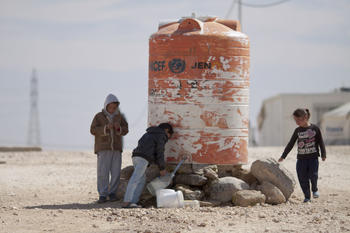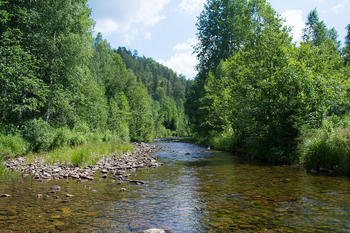Challenges
Challenges require IWRM. Challenges faced by more and more countries in their struggle for economic and social development are increasingly related to water. Water shortages, quality deterioration and flood impacts are among the problems, which require greater attention and action. There are many challenges for IWRM to strike a balance between the use of the resource as a basis for the livelihood of the world’s increasing population and the protection and conservation of the resource to sustain its functions and characteristics. The main challenges are:
- Securing water for people;
Although most countries give first priority to satisfaction of basic human needs for water, only one fifth of the world’s population is without access to safe drinking water and half of the population is without access to adequate sanitation. These service deficiencies primarily affect the poorest segments of the population in developing countries.
- Securing water for food production;
Population projections indicate that over the next 25 years food will be required for another 2-3 billion people. Water is increasingly seen as a key constraint on food production, on a par with, if not more crucial than, land scarcity.
- Developing other job creating activities;
All human activities need water and produce waste, but some of them need more water or produce more waste per job than others. This consideration has to be taken into account in economic development strategies. Especially in regions with scarce water resources.
- Protecting vital ecosystems;
Terrestrial ecosystems in the upstream areas of a basin are important for rainwater infiltration, groundwater recharge and river flow regimes. Aquatic ecosystems produce a range of economic benefits including products such as timber, fuelwood and medicinal plants. Furthermore, they provide wildlife habitats and spawning grounds. Ecosystems depend on water flows. Land and water resources management must ensure the preservation vital ecosystems.
- Dealing with the variability of water in time and space;
Almost all freshwater available for human use originates from precipitation, which varies immensely over time and space. Most tropical and sub-tropical regions of the world are characterized by huge seasonal and annual variations of rainfall, often compounded by erratic short-term variations.
- Managing risks;
Variations in water flows and groundwater recharge, whether of climatic origin or due to land mismanagement, can add to drought and flood events, which can have catastrophic effects in terms of large scale loss of human life and damage to economic, social and environmental systems.
- Creating public awareness and understanding;
Public awareness is needed in order to mobilize effective support for sustainable water management and induce required changes in behaviour and activities.
- Forging the political will to act;
In a world of scarce resources – financial as well as natural – political attention and commitment are vital to ensure good decision-making and necessary investments in the development and management of water resources.
- Ensuring collaboration across sectors and boundaries;
The traditional sectoral and fragmented approach to water resources management has often led to governing groups representing conflicting interests. Policy objectives have been set without consideration of the implications for other water users and without consultation across sectoral and institutional boundaries.
(Agarwal et al. 2000)


